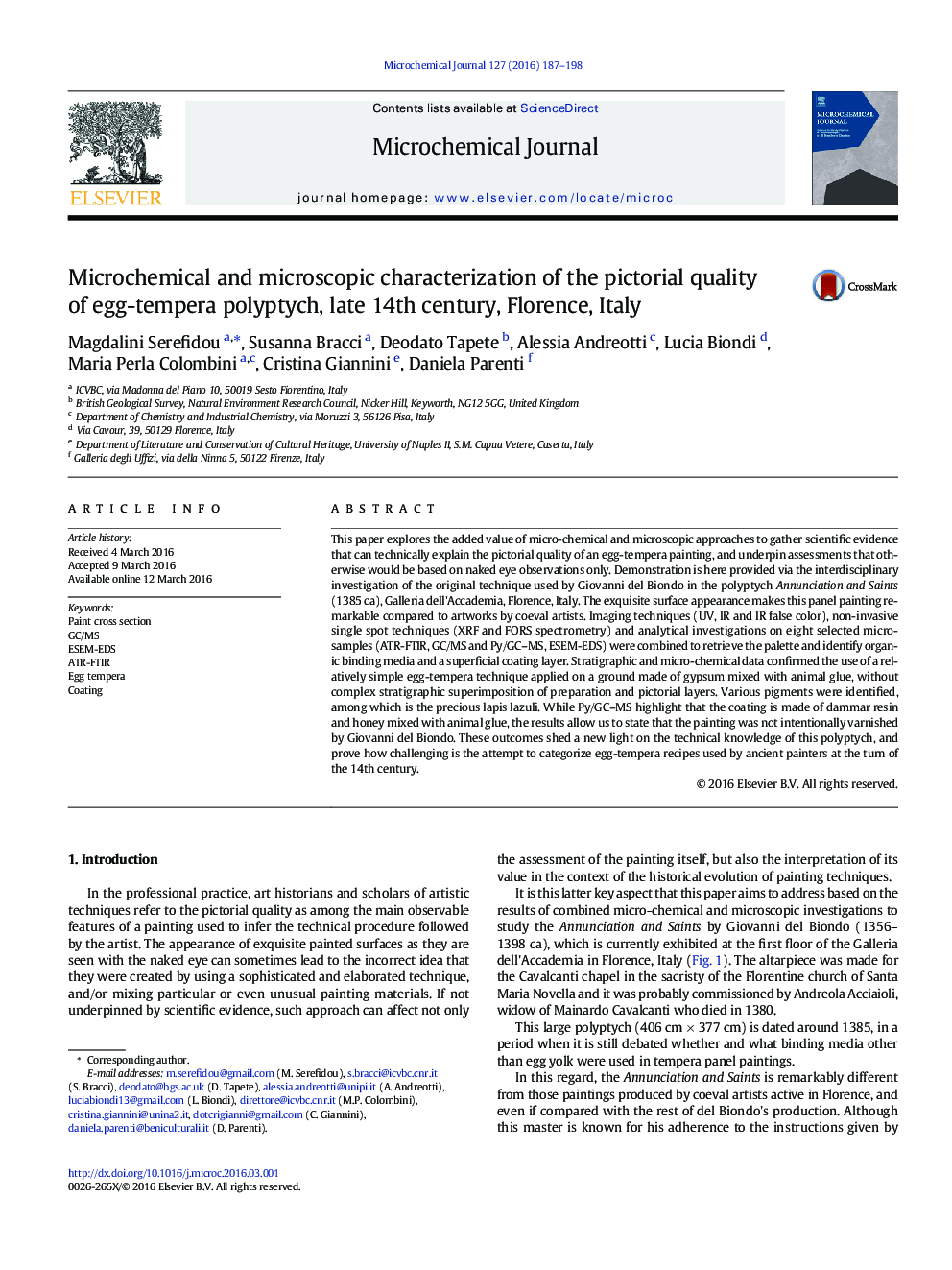| Article ID | Journal | Published Year | Pages | File Type |
|---|---|---|---|---|
| 1227518 | Microchemical Journal | 2016 | 12 Pages |
•A multi-technique approach is used to study a 14th-century polyptych.•Lapis lazuli confirms the wealthy commission of the painting.•No original varnish, but coatings due to later restorations are found.•Traditional egg tempera and simple stratigraphy are the secrets of the exquisite pictorial quality.
This paper explores the added value of micro-chemical and microscopic approaches to gather scientific evidence that can technically explain the pictorial quality of an egg-tempera painting, and underpin assessments that otherwise would be based on naked eye observations only. Demonstration is here provided via the interdisciplinary investigation of the original technique used by Giovanni del Biondo in the polyptych Annunciation and Saints (1385 ca), Galleria dell'Accademia, Florence, Italy. The exquisite surface appearance makes this panel painting remarkable compared to artworks by coeval artists. Imaging techniques (UV, IR and IR false color), non-invasive single spot techniques (XRF and FORS spectrometry) and analytical investigations on eight selected micro-samples (ATR-FTIR, GC/MS and Py/GC–MS, ESEM-EDS) were combined to retrieve the palette and identify organic binding media and a superficial coating layer. Stratigraphic and micro-chemical data confirmed the use of a relatively simple egg-tempera technique applied on a ground made of gypsum mixed with animal glue, without complex stratigraphic superimposition of preparation and pictorial layers. Various pigments were identified, among which is the precious lapis lazuli. While Py/GC–MS highlight that the coating is made of dammar resin and honey mixed with animal glue, the results allow us to state that the painting was not intentionally varnished by Giovanni del Biondo. These outcomes shed a new light on the technical knowledge of this polyptych, and prove how challenging is the attempt to categorize egg-tempera recipes used by ancient painters at the turn of the 14th century.
